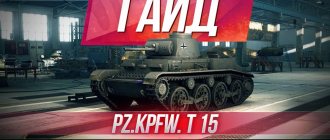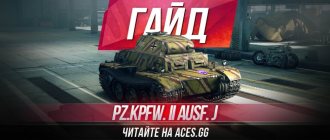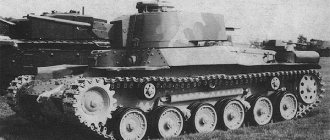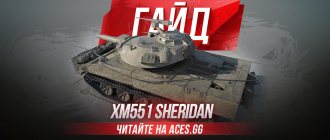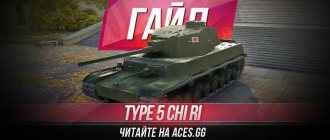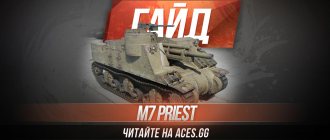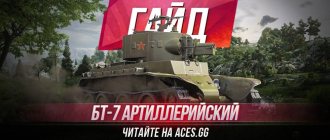Catch up and overtake competitors
In the last two decades, China's armored industry has made a serious qualitative leap.
Currently, it is developing several main lines of tanks, not counting export modifications - light for difficult terrain, amphibious, as well as two families of main battle tanks. Among the main battle tanks there are relatively inexpensive mass-produced vehicles and high-quality tanks that are not inferior to the latest foreign models. The representative of the latter was the Type 99 .
Reforms in China, started by Deng Xiaoping, gave impetus to the influx of new technologies, including military ones, into the Celestial Empire. Chinese engineers, like a sponge, absorbed them and were ready to translate them into new products. However, two factors prevented this: firstly, the PRC in the 80-90s did not yet have enough funds to afford the massive rearmament of the army with qualitatively new models, and secondly, the majority of defense industry enterprises were not technologically ready to produce such samples. As a result, compromises had to be made. In the field of tank building, such a compromise was the parallel development of two lines of main battle tanks - relatively simple and inexpensive mass-produced vehicles, as well as high-tech “elite” ones. The latter were supposed to be on par with modern tanks from Russia, Japan, the Republic of Korea and the USA.
Concept
The development of a new “elite” tank was carried out at the 601st Research Institute, as well as the design bureau at the 617th plant. Perhaps the greatest influence on the formation of its appearance was the acquaintance with the T-72M tank, several copies of which the Chinese managed to obtain in the 80s. This vehicle was several decades ahead of the then level of the Chinese tank industry, but Chinese experts were able to discern not only the strengths of the T-72M, but also its shortcomings. The gun, automatic loader, geometry of the frontal part of the hull, as well as the chassis were considered worthy of copying. The main drawback was considered to be the cramped and heavy turret. The primitive main armor was also not admirable.
Installing an engine on a new tank, which was a copy of a Western model, required increasing the size of the engine and transmission compartment. It was also necessary to enlarge the turret in order to avoid problems with the placement of elements of a promising fire control system (FCS), the composition of which was still being determined. In addition, exceeding the weight limit of 50 tons seemed highly undesirable, given the capacity of most Chinese roads and bridges. All this led to the need to limit protection - all combined armor is concentrated only on the frontal part of the hull and turret in a range of approximately 10 degrees to the right and left of the longitudinal axis of the vehicle. The sides have only symbolic protection. This is by no means a miscalculation of the designers, but only a sober compromise between the required cubic capacity of the hull and turret and weight restrictions.
In October 1999, the new Type 98G tank (ZTZ-98) was first shown to the public during a parade in honor of the 50th anniversary of the founding of the People's Republic of China. However, this model turned out to be only an intermediate, in fact, pre-production model - according to experts, no more than 40 such tanks were produced. Already in 2001, production of the Type 99 tank (ZTZ-99) began, featuring a new power plant, an improved control system and new generation reactive armor. It is believed that approximately half a thousand of these machines were produced.
Design
The layout of the Type 98G and Type 99 tanks is in many ways reminiscent of the T-72M. First of all, this concerns the geometry of the front part of the body with the driver’s workplace located along the axis of the car. At the same time, the length of the body has been increased by more than a meter. This was achieved by increasing the distance between the support rollers, which is also unequal: the 3rd and 4th rollers (in the area where the carousel autoloader is located) have a greater distance between themselves (and neighboring rollers) than the 1st and 2nd ones. th, as well as the 5th and 6th skating rinks.
The tower is welded from cast parts. Their thickness in the frontal projection is only 40 mm, but this part is additionally protected by two modules of “special” armor of the NERA type (Non-Explosive Reactive Armor). They contain several sandwich bags of two steel sheets with an energy-absorbing layer between them. This armor protection is an improved version of the modules that were used on the Type 85-IIM tank (1990), and the thickness of the modules and their configuration are almost identical to the Pakistani Al-Khalid tank. A serious drawback is the convex roof of the turret, which protrudes beyond the contour of the “special” armor modules.
Since 2001, the Type 99 and Type 99A tanks have been equipped with dynamic protection (RA), covering the frontal projection of the hull and turret, as well as the sides of the turret. The “type 99” uses the FY-II EZ, known from the “budget” tank “type 96”, and the “type 99A” uses FY-III on the sides of the turret and FY-IV in the frontal projection of the turret and hull. The effectiveness of the remote sensing system is assessed as corresponding to the Soviet elements of the 4S22 Kontakt-5.
The main armament of the tank is an unlicensed copy of the 125 mm 2A46M-1 gun, produced in China along with the 2E28M electro-hydraulic stabilization system. The ammunition load consists of 41 rounds (22 of them are in the carousel-type automatic loader). The cumulative shells used are BTJ1 (a copy of the BK-14M), high-explosive fragmentation projectiles VTE2 (a copy of the OF-19), as well as the 9M119 “Reflex” ATGM, produced in the PRC under license. But armor-piercing sabot shells (“type IIM” and the more modern DTW-125, adopted for service in 2010) are Chinese developments based on Israeli technology. The tank's additional armament is a coaxial 7.62 mm machine gun (ammunition capacity: 2,000 rounds) and a 12.7 mm anti-aircraft machine gun (300 rounds).
gun
Our little Japanese sandbox hero was not entirely lucky with weapons. There are frankly weak parameters here, but there are also quite good ones, so we will look for a balance.
So, Type 98 Ke-Ni Otsu gun
It has a small alpha strike by the standards of the third level, but an enviable rate of fire, thanks to which we have the opportunity to inflict very decent damage per minute.
However, this gun has serious problems with armor penetration, and while it is still possible to fight against classmates with conventional shells, then for battles at the bottom of the list is the Type 98 Ke-Ni Otsu World of Tanks
I'll have to buy more gold.
In terms of accuracy, everything is average, one might even say balanced. We have a large spread (more than the regular Type 98 Ke-Ni) and poor stabilization, like most of its classmates. However, the aiming speed of the Type 98 Ke-Ni Otsu light tank
got a comfortable one, so the process of dealing damage will be very comfortable. Well, if you look at the fact that our gun is capable of descending down 15 degrees, then our Japanese can only be envied, these are incredibly generous parameters.
Literature
Main battle tank “Type 98” (WZ-123)
Modifications: “Type 98A/B” (project) “Type 98G” (reinforced armor; 2000) “Type 98” with a 150-mm cannon (project) “Type 98” with external weapons (project)
The newest Chinese tank “Type 98” (WZ-123, also known as ZTZ-98) was first publicly shown on October 1, 1999 during a military parade in Beijing dedicated to the 50th anniversary of the founding of the People's Republic of China. Of course, the appearance of such a machine caused a general sensation. Quite unexpectedly, the Chinese demonstrated that they have a tank that is approaching in its combat capabilities the main battle tanks of other countries. Columns of “Type 98” and “Type 88C” tanks rode in the general formation at the parade, which allowed some would-be observers to identify them as experienced “Type 90-II/90-IIM” (even the designation “Type 96” appeared!), so how, supposedly, some tanks had two, and others four, exhaust pipes (of course, the latter applied to the “88C”, which has two exhaust pipes on the starboard side).
Undoubtedly, the Type 98 tank was a technical breakthrough for the Chinese military industry. Its design solutions were tested on the Type 90-II/MBT-2000 samples, and by the end of the 1990s, China finally created its own promising tank. The hull was created anew, and its bow actually repeated the design of the T-72M tank. The same thing happened with the chassis - many of its elements were copied from the T-72M (more precisely, from the Type 90-II). It also inherited weapons, a mechanized ammunition rack with an automatic loader, and much more. The turret's armor is also similar to that of the "90-II" tank (with the possibility of installing mounted dynamic protection).
An exclusive feature of the “98” is the presence of a laser active protection system for the tank. It consists of a laser warning system LRW (mushroom-shaped sensor behind the commander's hatch) and a quantum generator LSDW (laser self-defence weapon; box-shaped housing behind the gunner's hatch). When receiving a signal that a tank is being irradiated by an enemy laser beam, the warning system generates a signal to turn the turret towards the detected source, then a low-power laser beam is turned on, determining the exact location of the target, after which the beam power instantly increases to a critical level and disables optical means or organs of vision of the enemy operator. It is known that the Chinese side previously demonstrated portable versions of such laser weapons. For example, in 1995 at an exhibition in Manila. There it was designated as ZM-87 (supposedly can damage the human eye at a distance of up to 10 km). Judging by the way the tank's laser system was aimed in a vertical plane, there is a possibility that it could also be used as a means of destroying low-flying helicopters.
The smoothbore gun is an unlicensed copy of the Russian 2A46M tank gun. It has been reported that China has the ability to produce armor-piercing sub-caliber projectiles with a depleted uranium core in cooperation with Israel. Most likely, such shells will also be in service with Type 98 tanks. Nothing is known yet about the possibility of using tank guided projectiles, but there is such a possibility. The fire control system includes a gunner's sight with a built-in laser rangefinder and thermal imaging channel, a commander's panoramic combined sight (the image from the thermal imager is displayed on the displays of both), a 2-plane weapon stabilizer, a digital ballistic computer and a set of sensors.
As auxiliary weapons, the tank is equipped with two machine guns: a coaxial 7.62 mm “86” machine gun (to the right of the gun) with 2000 rounds of ammunition and an anti-aircraft 12.7 mm “W-85” (in front of the commander’s hatch) with 300 rounds of ammunition. . The coaxial machine gun is fired using an electric trigger at a range of up to 1000 meters. A manually controlled turret anti-aircraft machine gun mount (designated “QJC-88”) provides firing only in the front sector at a range of up to 1600 meters against ground targets and up to 1500 m against air targets. Its pointing angles in the vertical plane range from -4 to +75 degrees.
Modifications of the "Ture 98" tank
- “Ture 98” (WZ-123. ZTZ-98) - prototype released in 1992. The commander has an old type observation device installed.
- “Type 98A” (1998) – serial modification of the “Ture 98” tank.
- “Ture 98B” is an unrealized project of the “Ture 98″ tank with a 120 mm cannon.
- “Type 98G” (2000) – a variant of the “Ture 98” tank with reinforced armor. The armor protection of the tank's frontal projection has been enhanced by installing built-in dynamic protection units on the hull and turret. In addition, the sides of the tower are additionally protected, where the hinged dynamic protection is mounted on top of the lattice basket. The tank's combat weight increased to 52 tons. Served as the basis for the creation of the Type 98G tank.
Notes[edit]
- ^ abcdefghijklmn Imperial Japanese Army Taki: Type 98 "Chi-Ho" medium tank
- Zaloga 2007, p. 11.
- Imperial Japanese Army Taki in: development of imperial JAPANESE TANKS: "Type 97 Medium Tank"
- Taki's Imperial Japanese Army: DEVELOPMENT OF IMPERIAL JAPANESE TANKS: "Shinhoto Chi-Ha"
- Zaloga 2007, pp. 13, 14.
- COOX 1985, p. 437.
- ^ a b Zaloga 2007, p. 14.
- Zaloga 2007, p. 20.
- Zaloga 2007, p. 15.
Specifications
| Sedan | Station wagon | |
| Vehicle length | 5.1 m | 5.35 m |
| Width | 2.1 m | 2.1 m |
| Height | 1.83 m | 2.1 m |
| Wheelbase | 3.34 m | 3.5 m |
| Clearance | 0.315 m | 0,315 |
| Curb weight | 4.35 tons | 5.1 tons |
| Load capacity | Normal – 600 kg, maximum – 850 kg | 850 kg |
| Speed | Up to 180 km/h | Up to 180 km/h |
The manufacturer's declared fuel consumption per 100 kilometers for both versions of the car is 15 liters in the city cycle and 12 liters on the highway (for a gasoline engine). Acceleration to 100 km/h should be accomplished in 9-10 seconds.
History of creation
It is no secret that the meager choice provided by the Soviet automobile industry to consumers often forced them to build cars themselves. One of the most famous figures of “samavto” were Gennady Khainov and Dmitry Parfenov, the authors of the “Laura” car. In the late 80s, talented designers managed to create their own enterprises for the development of automotive equipment. Parfenov, for example, headed the company that dealt with armored cash-in-transit vans.
According to some sources, the idea of “Combat” originated with Parfenov back in the years when the city on the Neva retained the name of Lenin. At the same time, sources do not provide confirmation that the T-98 was actually presented in 1986.
Be that as it may, in 2000, prototypes of an SUV were presented - a 5-door station wagon and a pickup truck with a very short closed body.
The purpose of the car was defined very vaguely - “transportation of “very important persons” in a combat zone.” Not “senior commanders” or “members of the government” - but “very important people.” Who this is and why they need to roll out in a combat zone was not specified.
Production of the car began in 2004. In addition, since 2010, the Kombat SUV, called Prombron, has been assembled in Estonia at the DARTZ plant.
Test Drive
There are still few reviews about the use of the Kombat T-98 vehicle. Many of them were also written by personal acquaintances of Dmitry Parfenov and, therefore, are not objective.
Overcoming a water obstacle on a Kombat T-98 vehicle
Having “sifted” the available information, removing from it openly advertising statements and immoderate enthusiasm for the unprecedented coolness of the unique armored car, we can note the following main features of this vehicle, which appear when driving it:
- “Combat T-98” moves quite smoothly, road unevenness is not felt in the cabin;
- The roar of the powerful engine is almost inaudible;
- Real fuel consumption is much higher than that stated by the manufacturer and reaches 50 liters per 100 kilometers;
- The vehicle's cross-country ability is quite good. The T-98 Combat overcomes virgin snow and mud most confidently. At the same time, driving over various uneven surfaces can lead to contact with the underbody. It is very difficult to remove a stuck Kombat due to its large mass;
- Acceleration to 100 kilometers per hour in 10 seconds can apparently be achieved only on the lightest variations of the armored car. In general, the car, despite the powerful engine, is “dumb,” which is delicately formulated in advertising articles as “the car dictates a measured ride to the driver”;
- “Kombat T-98” is stable both when driving on slopes and when maneuvering on the road at high speed. At the same time, after entering a skid, it is very difficult to get out of it - this maneuver requires serious driving skills.
It was not yet possible to judge the level of reliability of the reservation - these cars did not come under real fire. However, they passed the tests at the test site quite confidently. True, a video once appeared on the Internet in which it was clearly visible how, after performing a ram, some kind of liquid flowed out from under the hood of the Kombat.
Car “Kombat T-98” produced in 2009 after a serious accident
Representatives of the manufacturing company claimed that it was the glass washer reservoir that burst, and not the cooling radiator, but in any case, this indicates insufficient structural strength of the front part of the armored car.

